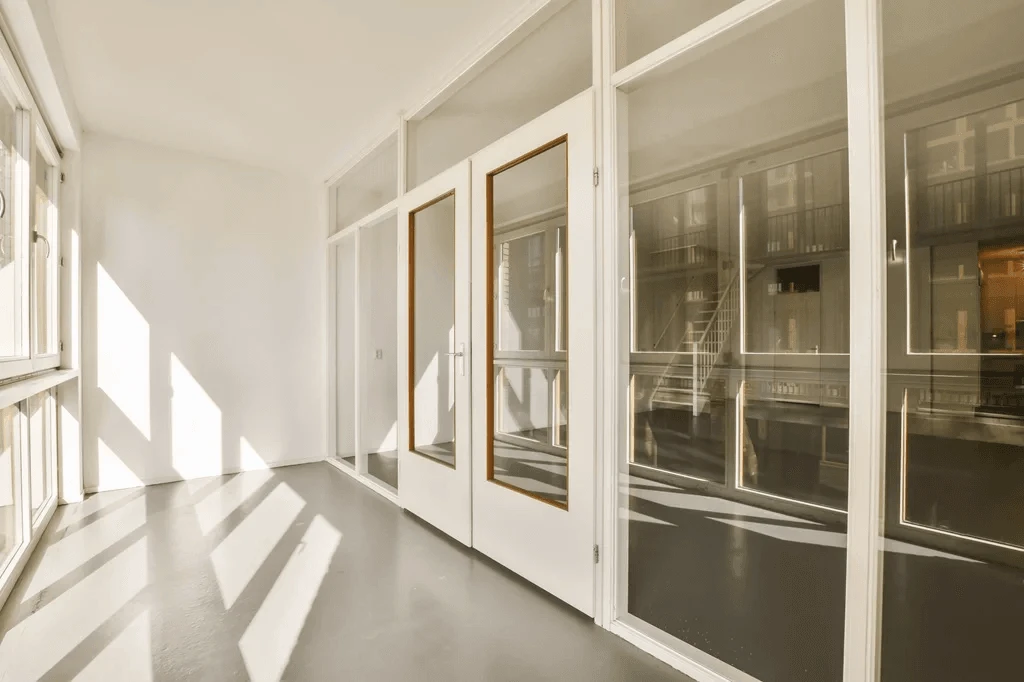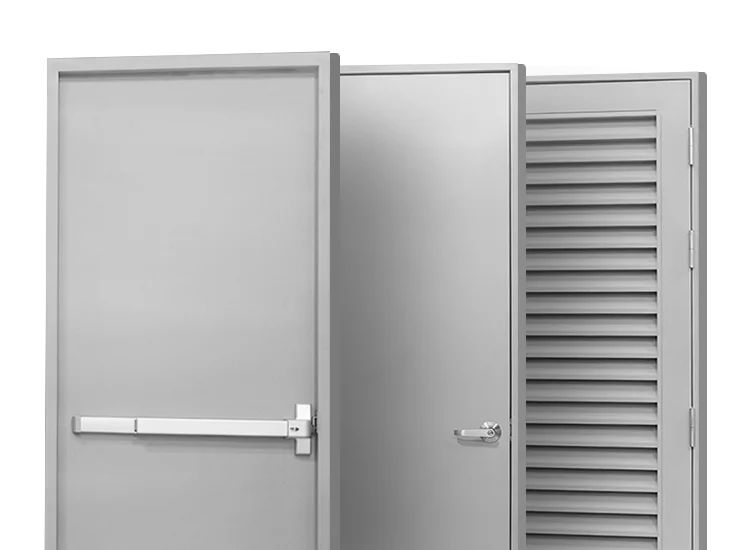Have you ever noticed how the lighting in a room affects your mood and energy? The same principle applies to the workplace where proper lighting significantly enhances employee experience. Whether it’s an office, factory, or retail setting, good lighting plays a crucial role in creating an optimal work environment.
In this blog post, we’ll discuss the importance of proper lighting in the workplace as well as the common office lighting issues and their negative impact on employees. Plus, we’ll share office lighting tips you should heed to foster a more comfortable and efficient workplace for everyone.
Importance of Proper Lighting in the Workplace
Proper lighting helps employees feel more awake and cheerful, reduces eye strain, and even keeps body clocks in check. Moreover, it greatly impacts employee productivity and well-being. In fact, research from the International Labour Organization has shown that improved lighting in factories can lead to a 10% increase in productivity and a 30% reduction in errors.
Good lighting in the workplace is more than just a matter of visibility. As mentioned, it can affect employee well-being, productivity, and overall performance. Hence, understanding the importance of proper lighting becomes an effective avenue in creating a workspace that promotes positivity, creativity, and success
Let’s explore how proper lighting plays a vital role in the workplace.
1. Boosts mood and well-being.
Proper lighting, whether natural light or artificial lighting, can enhance mood, reduce symptoms of depression and anxiety, and contribute to a sense of well-being among employees. These, in turn, lead to higher job satisfaction and lower stress levels. Plus, a well-lit workspace creates a more positive and uplifting atmosphere, helping employees feel happier and more motivated.
2. Regulates circadian rhythms.
Our bodies rely on natural light to regulate our internal clocks, known as circadian rhythms. Exposure to natural light during the day and dimmer, warmer light in the evening helps maintain a healthy sleep-wake cycle. Proper lighting in the workplace can help employees stay alert and focused during the day and improve their sleep quality at night.
3. Improves visibility and safety
One of the importance of proper lighting in the workplace is that it ensures visibility and safety. Properly lit work areas minimize the risk of accidents and injuries by making hazards more visible. It also allows employees to perform tasks more efficiently and accurately, contributing to a safer work environment.
4. Lessens eye strain and fatigue
Poor lighting can strain the eyes, leading to discomfort, headaches, and fatigue. Proper lighting, especially task lighting that reduces glare and shadows, helps lessen eye strain and improve visual comfort. This boosts productivity and decreases the likelihood of errors.
5. Supports health and wellness
Another importance of proper lighting in the workplace is that it serves as key component of a healthy work environment. Natural light has been linked to various health benefits, including better sleep, improved mood, and increased vitamin D production. By providing adequate natural and artificial lighting, employers can support the overall health and wellness of their employees.

Most Common Lighting Problems in a Workplace
When it comes to lighting in the workplace, several common problems can affect employees’ well-being and productivity. Below are some issues that are frequently encountered.
1. Glare
Glare not only causes discomfort but also leads to headaches, eye strain, and reduced concentration. To minimize glare, consider using blinds or shades to control natural light and positioning computer screens away from direct light sources.
2. Insufficient Lighting
Dimly lit workspaces can make it hard to read, focus, and stay alert. Insufficient lighting also leads to eye strain and headaches. Hence, make sure that your workspace is well-lit with a combination of overhead lighting and task lighting to provide adequate illumination for all tasks.
3. Flickering Lights
Flickering or buzzing lights are distracting and disruptive. They can indicate electrical issues that need prompt attention. If you encounter such lightning problems, report them to your facilities team immediately for inspection and repair.
4. Color Temperature Mismatch
Mismatched lighting creates a disjointed and uncomfortable environment. Thus, aim for consistency in color temperature throughout your workspace to create a harmonious and visually appealing atmosphere.
Why is Poor Lighting Dangerous?
Poor lighting in the workplace poses significant dangers to employees’ health and safety. It can also lead to various issues that affect both physical and mental well-being, ultimately impacting work performance and overall quality of life.
Imagine trying to navigate a dimly lit workspace, struggling to see hazards and obstacles in your path. Insufficient lighting increases the risk of slips, trips, and falls, putting employees’ safety at risk. Not only that, but poor lighting also causes eyestrain and fatigue, leading to discomfort, headaches, and blurred vision.
In addition, dim or flickering lights hinder productivity by making it challenging to read documents, operate machinery, or perform tasks that require visual focus. Employees may take longer to complete tasks or commit more errors due to poor lighting conditions which might affect the quality and reliability of products or services.

Office Lighting Tips You Must Follow
As mentioned, proper lighting is essential for creating a comfortable and productive work environment. To help you optimize lighting in your office, we’ve compiled a list of office lighting tips you should heed.
1. Maximize natural light.
Natural light has been shown to improve mood and productivity as well as reduce reliance on artificial lighting, which helps save energy and lower costs. To maximize natural light in the workplace, it’s crucial to strategically place workstations near windows to make the most of natural sunlight.
2. Use task lighting.
Task lighting is essential for minimizing eye strain and improving visibility at workstations. Desk lamps or under-cabinet lighting can be used to supplement ambient lighting and provide targeted illumination.
3. Adjust lighting levels.
Adjustable lighting gives employees the flexibility to tailor their lighting environment to meet their specific needs, leading to improved job satisfaction and performance. Providing them the ability to adjust lighting levels helps cater to individual preferences and tasks, which can be achieved through dimmer switches or adjustable desk lamps.
4. Maintain lighting fixtures
Regular maintenance of lighting fixtures is crucial to ensure their optimal function and efficiency. This involves timely replacement of bulbs and thorough cleaning of fixtures to eliminate dust and dirt, which can diminish light output.
5. Choose the right bulbs.
Use LED bulbs, which are energy-efficient and provide better quality light than traditional incandescent bulbs. Choose bulbs with a color temperature of around 4000K for a balanced, natural light.
6. Use lighting zones.
Install separate lighting zones to control different areas of the office independently. For example, areas where employees need to focus may have higher lighting levels, while relaxation areas may have softer lighting. This also allows for better customization of lighting levels based on specific tasks and needs.
7. Consult employees.
Ask employees for feedback on lighting preferences and adjust lighting settings accordingly. Providing a comfortable lighting environment helps improve employee satisfaction and productivity.

Improve the Overall Lighting of Your Commercial Spaces with Doors with Glass and Custom Windows
Lighting is a crucial but often overlooked aspect of the work atmosphere. Beyond simply illuminating a space, this can have a profound impact on employee comfort, health, and productivity. With the importance of proper lighting in the workplace, particularly the benefits of natural light, it’s worth considering investing in doors with glass and custom windows that could help foster a brighter, more inviting workspace.
If you’re planning to upgrade your workplace with doors with glass and windows that not only provide security but also contribute to the modern and welcoming atmosphere, look no further than Janus Steel OPC! Our premium steel doors seamlessly blend sleek design with cutting-edge security features, making them an ideal choice for office managers seeking to prioritize both aesthetics and functionality.
Contact us today and let us help you enhance workplace safety and productivity with our innovative door solutions.





